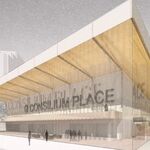unimaginative2
Senior Member
Again, I'd like to say that Toronto in general is no more dense than Los Angeles. We have a denser downtown but our suburbs are much less dense compared to LA.
In terms of per capita transit ridership, Toronto and LA aren't even comparable. Density is irrelevant; it's concentration and the transit-orientation of development that matters.




